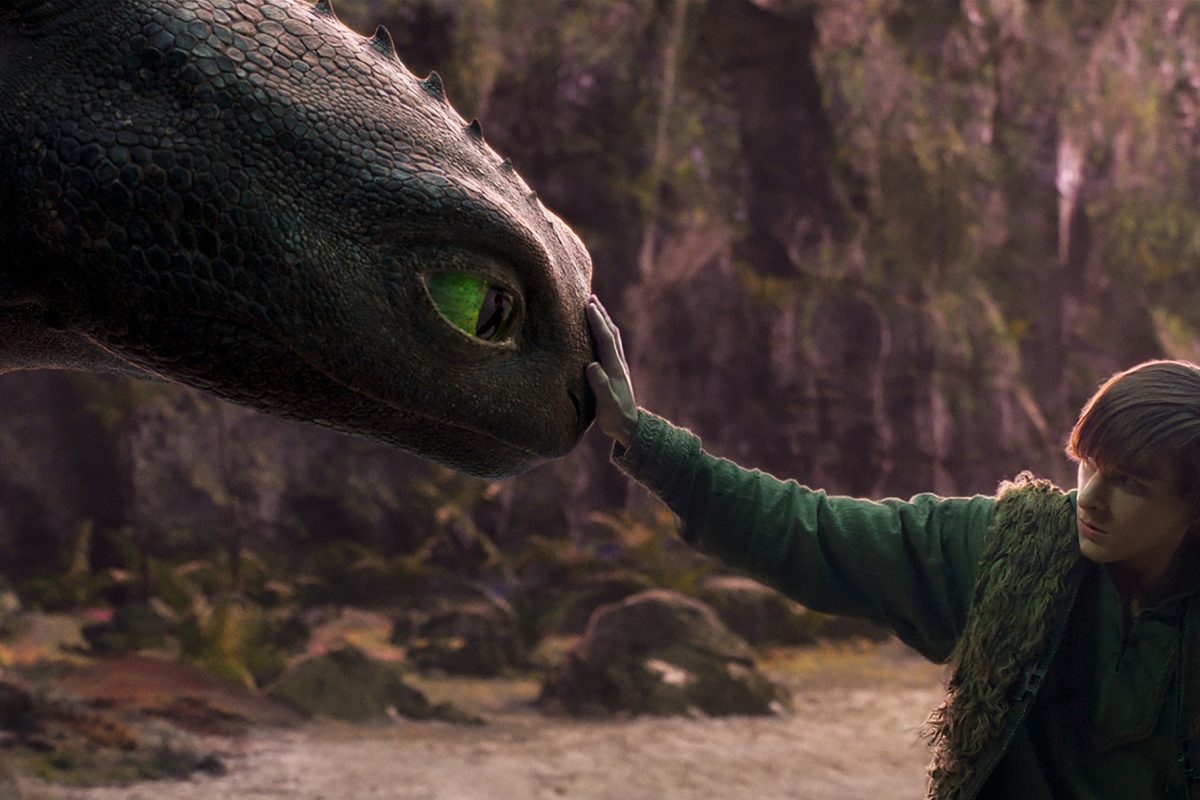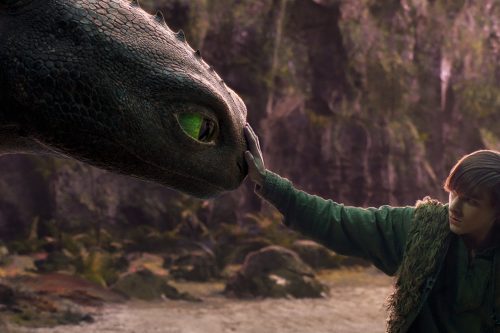
Confession: I was a fan of the How to Train Your Dragon movies long before I had two little boys old enough to watch each film (and all the series) at least three or four times. In 2010 — when I was in my late 20s — a friend convinced me to go see the first How to Train Your Dragon film with her in the theater. Much to my surprise, I really enjoyed it and that may have influenced my decision, years later, to introduce the movies to my sons.

Juliet Vedral
So when the opportunity to screen the new live-action version of How to Train Your Dragon arose, I jumped at it. And I brought my sons. All you probably need to know is that despite both of them pretty much knowing what eventually happens to Hiccup Horrendous Haddock III and his friends, they both were on the edge of their seats throughout the whole film. The film brings such a fresh experience to the story that it felt like something totally new.
For those of you unfamiliar with How to Train Your Dragon, it is a classic underdog story. Hiccup, the only son of the chief Stoick the Vast, is by all accounts a very disappointing Viking. He is seen as weak and clumsy by most of the inhabitants of the Isle of Berk, where he lives. The Isle of Berk is beset by dragons and it is a point of pride for one young person to kill a dragon after going through training.
During the opening battle scene of the film, Hiccup injures a rare Night Fury, who he encounters days later. He befriends the dragon and names him Toothless and learns, well, how to train his dragon. This does not go over well with his father, though eventually Stoick comes to see that training the dragons and caring for them is better than killing them.
“I was raised going to church every Sunday,” writer and director Dean Deblois told me. “I think the lessons that I’ve gleaned are all about taking a peaceful approach, leading with your heart, leading with compassion, and that’s what Hiccup is. … He’s cut of a different cloth, and that makes him a teaching hero where he can discover a new way forward, a peaceful way forward simply by leaning into the thing that most every other Viking would say is a weakness.”
Hiccup’s “weakness” for choosing compassion and peace over violence and hatred is, as Deblois pointed out, “ultimately the thing that saves everyone.” Stoick wants to find the dragon’s nest and kill them on their home turf, but he fails to do so. Hiccup, led by Toothless, finds the dragon’s nest and learns why the dragons keep stealing Berk’s livestock. There’s an even bigger dragon that is frightening and bullying the smaller dragons into doing its bidding. Hiccup and the other dragon riders are able to defeat the big dragon and free both the people of Berk and their dragon friends from its tyranny. His courage is not based on bravado, but on love.

Mason Thames in How to Train Your Dragon, now showing in theaters across the country (Universal Pictures)
Hiccup defies every stereotype of what a Viking hero should look like. He is not physically intimidating, and he’s not drawn to violence or destruction. He loves to invent and create and to connect with the people around him. In fact, based on our current national conversation about masculinity and “manly jobs,” Hiccup would be, according to internet trolls, a bit of a “soyboy.” But as the Bible shows us, God always chooses “the foolish things of the world to shame the wise … the weak things of the world to shame the strong. God chose the lowly things of this world and the despised things — and the things that are not — to nullify the things that are, so that no one may boast before him” (1 Corinthians 1:27-29).
What could be weaker than an almighty deity humbling himself to empathize with weak, foolish, and ordinary humans? What could be weaker and more antithetical to worldly standards of “manliness” than being publicly humiliated and killed by one’s own creation? What could be more foolish than choosing love over fear and self-preservation?
The strength to lay one’s life down didn’t come from Jesus’s power and might. Jesus told Peter to put away his sword when the apostle resorted to violence to save him. No, the strength to endure the crucifixion came from the “joy set before him” — reconciliation with us, his beloved, wayward creation.
Jesus showed us all a better way to be human, just as Hiccup shows his community a better way to be a Viking. Not through violence and bravado, but through humility and love. I know the kind of men I want my sons to become.
Juliet Vedral is a writer, child-wrangler, and amateur shoe collector, as well as a senior associate at The Clapham Group. Her writing has also appeared in Sojourners. A native New Yorker, Juliet currently resides in Arlington, VA, which is still a weird thing for her to say.






